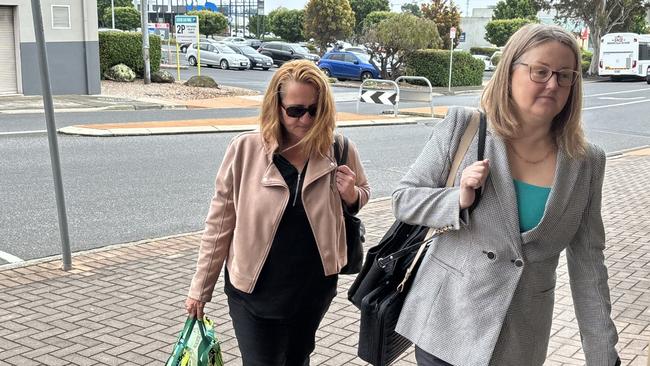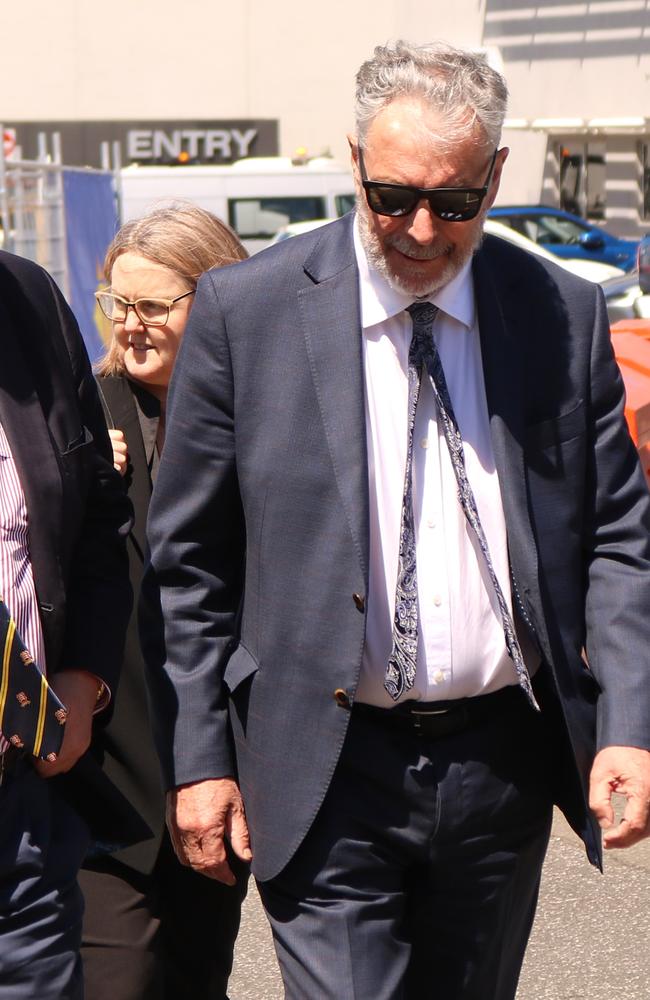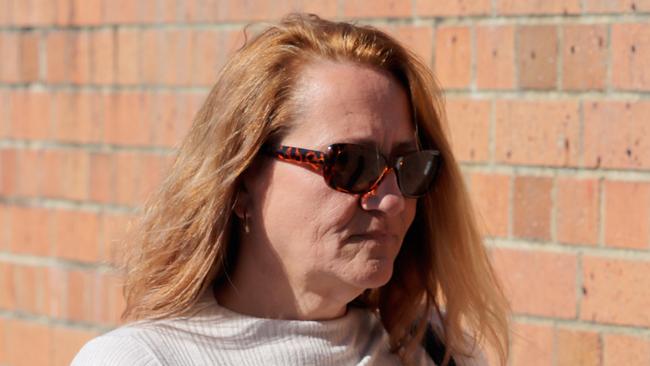Hillcrest jumping castle tragedy: workers unprepared for extreme events
The trial into the Hillcrest jumping castle tragedy concluded for day seven where the case’s defence witness was challenged.

Police & Courts
Don't miss out on the headlines from Police & Courts. Followed categories will be added to My News.
A large part of day seven of the criminal hearing into the Hillcrest tragedy saw the prosecution object to parts of a report tendered by mechanical engineer David Eager.
Prosecutor Madeline Wilson objected to some of the terminology used in the report, which formed part of the evidence from Dr Eager – the first witness called by the defence.
Magistrate Robert Webster told the Devonport Magistrate Court that he would decide whether to remove parts of the report when the hearing resumed on Thursday morning.
Taz-Zorb owner Rosemary Gamble has pleaded not guilty to one count of failure to comply with health and safety duty category 2 in relation to the events at Hillcrest Primary School in December 2021, where six children died after a jumping castle was flung 10m into the air.
She is fighting that charge in a nine-day hearing at the Devonport Magistrates Court that is scheduled to end on Friday.

On Wednesday morning, mechanical engineer Rodrick McDonald reiterated his belief that the Taz-Zorb workers were ill-equipped to handle the extreme winds that struck the jumping castle.
He had made the original comments on Tuesday while giving evidence.
In response to a question by Prosecutor Madeline Wilson, Mr McDonald told the court on Wednesday that he did not believe Taz-Zorbowner Gamble was adequately trained on how to operate a jumping castle.
“I don’t believe her experience led to competence,” he said.
Mr McDonald also said he believed Ms Gamble was unaware of the risks associated with using four pegs instead of eight on a jumping castle.
“Smooth seas don’t make for good sails,” he said.
“If you experience comfortable conditions all the time, you don’t actually understand extremes.
“I think if you had operated 200 times and gone through a number of events … that will probably make you a better operator and teach you that extreme events are things you need to consider.”

When asked about risk normalisation, Mr McDonald said it was likely something Ms Gamble had little experience with.
“In this context, if you put up a castle 200 times on a perfectly sunny, windless day, and when you put it down, it was fine – you would have a basis to say that this was okay.
“But it’s only when you have a system that actually tested it to its limit, then you actually experience the risk.”
Mr McDonald spent most of the morning cross-examined by defence lawyer Chris Dockray, who said that the wind event leading to the jumping castle becoming airborne and the other factors surrounding it were hard to analyse.
“In these dynamic circumstances, I put to you – as you acknowledge – that it’s not possible to calculate the force applied,” Mr Dockray said.
Mr McDonald agreed with him.
Mr Dockray also said that understanding the Australian standards was “complex and difficult”.
In response, Mr McDonald said Ms Gamble “should have sort help”.
UPDATE: On day seven of the criminal hearing into the Hillcrest tragedy, mechanical engineer Rodrick McDonald reiterated his belief that the Taz-Zorb workers were ill-equipped to handle the extreme winds that struck the jumping castle.
In response to a question by Prosecutor Madeline Wilson, Mr McDonald told the court that he did not believe Taz-Zorb owner Gamble was adequately trained on how to operate a jumping castle.
“I don’t believe her experience led to competence,” he said.
Mr McDonald also said he believed Ms Gamble was not fully aware of the risks associated with using four pegs instead of eight on a jumping castle.
“Smooth seas don’t make for good sails,” he said.
“If you experience comfortable conditions all the time, you don’t actually understand extremes.
“I think if you had operated 200 times and gone through a number of events … that will probably make you a better operator and teach you that extreme events are things you need to consider.”
Mr McDonald spent most of the morning cross-examined by defence lawyer Chris Dockray, who said that the wind event leading to the jumping castle becoming airborne and the other factors surrounding it were hard to analyse.
“In these dynamic circumstances, I put to you – as you acknowledge – that it’s not possible to calculate the force applied,” Mr Dockray said.
Mr McDonald agreed with him.
INITIAL: Rosemary Gamble’s lawyer, Chris Dockray, is expected to continue his cross-examination of mechanical engineer Rodrick McDonald on day seven of the criminal hearing into the Hillcrest tragedy.
Ms Gamble, who owns Taz-Zorb, has pleaded not guilty to one count of failure to comply with health and safety duty category 2 in relation to the events at Hillcrest Primary School in December 2021, where six children died after a jumping castle was flung 10m into the air.
During cross-examination yesterday afternoon, Mr Dockray said that his client’s noncompliance with Australian standards “replicated that of East Inflatables”, the Chinese company that sold her the jumping castle.
Mr Dockray also accused the company of “flagrant noncompliance”, which Mr McDonald agreed with.
Mr McDonald told the Devonport Magistrates Court on Monday that his report found that the jumping castle involved in the tragedy did not meet Australian standards.
“The crux of the findings were the castle was not compliant to — in fact, all of the devices were not compliant to — the Australian standards,” Mr McDonald said.
“The operations were not compliant to Australian standards, and the systems that were in place were not compliant with — so things like the choice of the anchorage system was not the one to the manufacturer’s instruction and not what would be the standard.”
The hearing is expected to wrap up on Friday.




